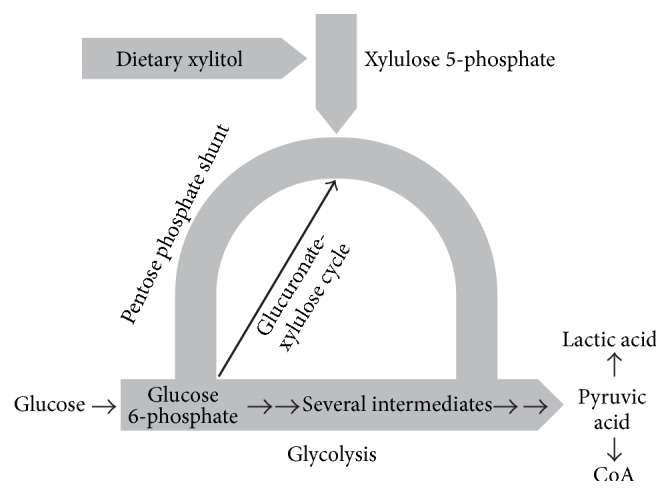Figure 1.

Relationship between the metabolism of xylitol and glycolysis in humans. The scheme describes the metabolism of dietary xylitol in broad outline only. The body receives energy from glycolysis (the thick horizontal arrow). The first intermediate of glycolysis is glucose 6-phosphate which forms an important link between glycolysis and another metabolic pathway, called the pentose phosphate shunt, or pentose phosphate cycle (curved arrow). The thinner black arrow represents the glucuronate-xylulose cycle of Touster. The differences in the thickness of the arrows reflect the relative portion of these three pathways in the overall metabolism. Although the significance of the Touster cycle is minor from the energetic point of view, it is nevertheless absolutely necessary for body functions. Pyruvic acid which may be regarded as the end product of glycolysis can be further metabolized in two ways: reduction to lactic acid under conditions of limited oxygen supply, or becoming a part of coenzyme A when the oxygen supply is sufficient. The scheme shows how xylitol can contribute to the overall energy metabolism of the body. The original scheme of Bässler [67] was modified and completed by the present author.
